I promised last week that I would add a post on the demo by Aurelio Rodriguez Lopez, that occurred on Sunday morning. I didn’t stay for the whole thing, but I got pictures of the portraits in process, and him and his materials and I took notes on what he uses. As I noted in the last post, what he does is completely different from what I would do for a landscape. But his results are quite amazing. You can see that from the painting Meditacion, which won one of the two awards. The background is gold, I think maybe irridescent pastel. He uses a number of different techniques to create backgrounds for his portraits. (Ignore the white spot, which is from the camera)
For the demo, he brought two different portraits which he had begun in workshops. While I was there, he worked on the portrait of the man. I was very interested to see his pastel boxes, which contained highly sharpened pencils, as well as sticks. He uses pencils and sticks interchangeably, using a variety of brands of pencils with Rembrandt and Girault sticks. He said that of the 6,000 portraits that he has done in the past 30 years, 90% have been done on Canson MiTeintes, as the two demo pieces were. He uses a #177 Sepia pencil for his drawing, adding some black and a bit of white to create the initial layer of pastel. He uses a brush to get rid of excess pastel, as well as stomps for blending (all the things I have pooh-poohed over my brief career in pastel!!!). Needless to say, his technique is very exacting and delicate.
While he used to work from life, he now works from photos, reproducing the photo to the size of the painting and laying along side, as you can see in the photo. He uses four stages: 1) drawing, 2) color application, 3) mixing and blending, and 4) recapturing the fine details of the drawing. In the blending phase, he uses a black Conte 3B pencil, which is the “darkest black” to blend into other colors to darken them. He noted his problems of achieving darks (which had been my problem when I was using Rembrandts and Canson). I think I noted in the last post that he mentioned the Ludwig darks, but I couldn’t imagine him using anything as large as a Ludwig! (Perfect for Tony Allain, however!)
I couldn’t stay for the entire demo as the weather was wonderful and the beautiful French countryside (and my husband) were calling to me! But meeting him was one of the real treats of this trip. While I know I would never work like this, I do know someone who might. I may have told you about my friend Karl, who is in a federal prison. When he first wrote to me, I learned that he was doing portraiture, using Canson, and inexpensive pastels, including a lot of pencils. I got him to use “better” papers (from my stand point) and softer pastels. After watching Aurelio’s demo, I felt really guilty!!! I wished that Karl could have been there. I did send him a detailed letter with these images, giving him permission to do whatever he likes!!!

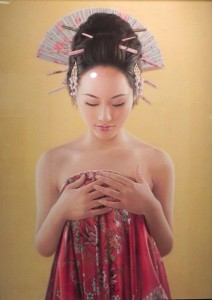
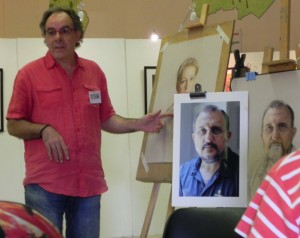
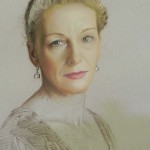
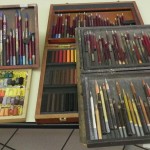
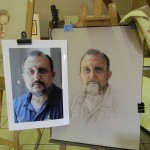
I have admired Aurelio’s work for a long time due to his astounding ability to achieve perfection, and realism. Thank you for posting your description of his demo.